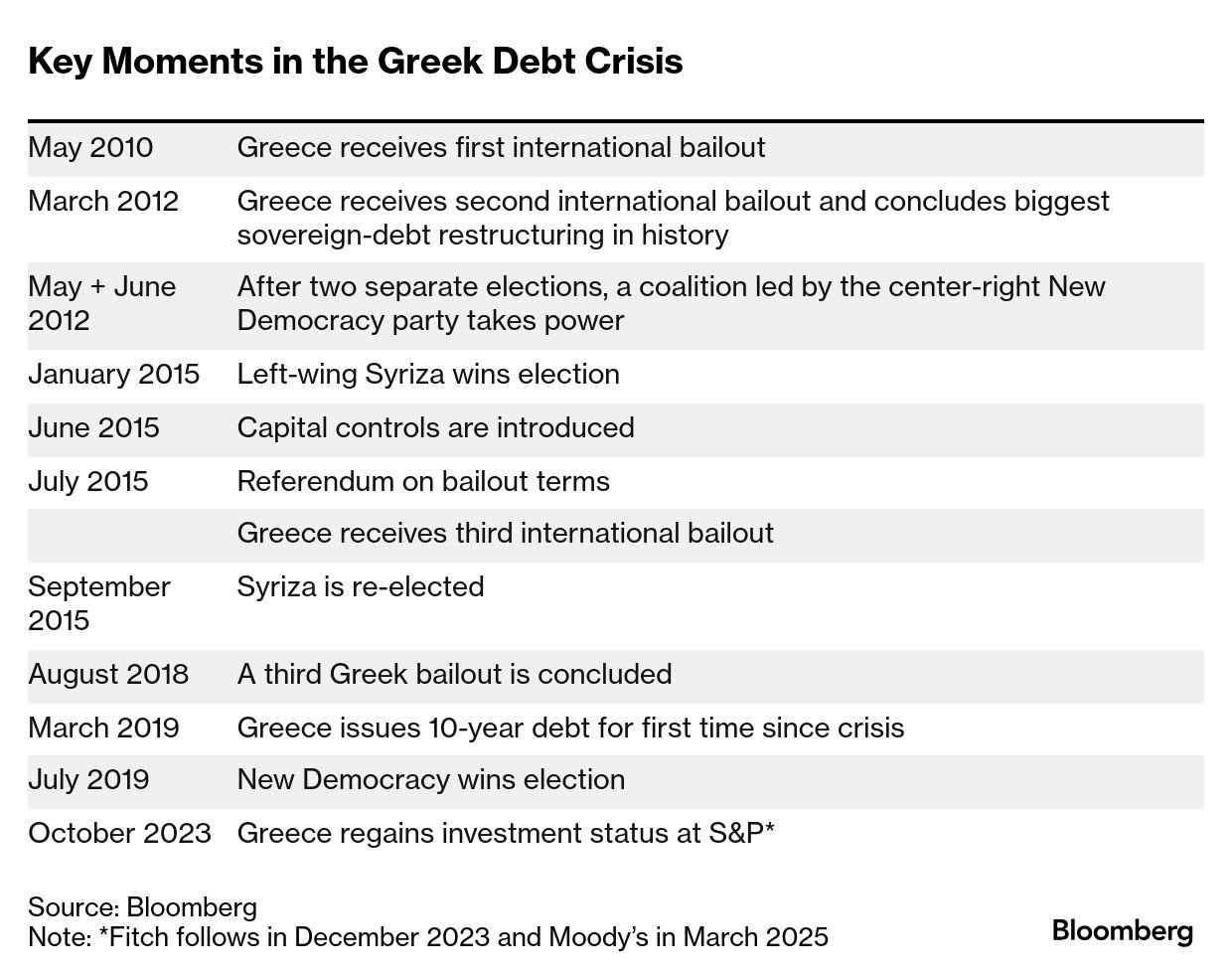The megabill will soon be megalaw
“House Republicans passed their domestic policy megabill Thursday after nearly 24 hours of nonstop angst, discord and hands-on pressure from President Donald Trump and allies — ultimately uniting to deliver his top legislative priority.
The 218-214 final vote is a major victory for congressional Republicans who pledged to send the bill to Trump’s desk before July 4. Speaker Mike Johnson muscled the bill through in the early-morning hours after a full day of meetings with holdouts, huddles on the House floor and gatherings of different factions at the White House.
One preliminary vote Wednesday was held open for more than nine hours — what Democrats claimed was a new House record — as GOP leaders scrambled to secure the votes. Once they did, House Minority Leader Hakeem Jeffries delayed final action almost another nine hours with a record-breaking floor speech attacking the 887-page bill.
The decisive vote ended up almost entirely along party lines. Only Republican Reps. Brian Fitzpatrick of Pennsylvania and Thomas Massie of Kentucky joined Democrats in opposition to the bill.”
Read the latest at POLITICO
Trump ignored GOP warnings and broke a key campaign promise to score a win on the tax bill
“Congressional Republicans on Thursday passed President Donald Trump’s signature $3.4 trillion measure that cuts taxes and spending and sets aside hundreds of billions of dollars for immigration enforcement. But in Trump’s eagerness for a legislative victory, he walked away from his promise not to touch health care — risking the GOP majority in Congress.”
Read more at Washington Post
What's buried in the bill
Speaker Johnson holds up the final tally — 218-214 — after the "big, beautiful bill" passed yesterday. Photo: Alex Wroblewski/AFP via Getty Images
“The breakneck speed of deliberation over the nearly 900-page bill that's on its way to President Trump's desk leaves plenty of minutiae to sift through, Axios' Herb Scribner writes.
Here are three under-the-radar pieces of the bill to watch out for:
1. Gambling: In the new bill, gamblers would only be able to deduct 90% of their losses from their net income when paying taxes. Currently, gamblers can deduct 100%.
Translation: A hypothetical gambler who won $100,000 but lost $100,000 would have to pay taxes on $10,000 of income.
2. Charitable giving: The new bill allows those who take the standard deduction when filing their tax returns to deduct up to $1,000 (single) or $2,000 (joint).
3. Car loan interest: The bill allows some taxpayers to deduct up to $10,000 of annual interest on auto loans for new cars.”
Go deeper: More on what's in the bill.
A New York Times calculator asks 33 questions ("Are you a tipped worker?" ... "Are you a whaling captain or a fisher living in Alaska?") to help determine the bill's effect on your wallet across taxes, health care and energy (gift link). [Axios]
Supreme Court lets Trump admin deport men detained in shipping container for 6 weeks to South Sudan
“The Supreme Court on Thursday cleared the way for the Trump administration to deport eight men to South Sudan who have been detained in a shipping container on a U.S. military base in Djibouti for six weeks after becoming caught up in a legal tug-of-war between the White House and a federal judge in Boston.
By an apparent 7-2 vote, the justices lifted an order from U.S. District Judge Brian Murphy that had blocked the men’s deportation. Murphy took that step despite a Supreme Court ruling last week that put a hold on an earlier, nationwide injunction he issued requiring the administration to give deportees advance notice of their destination and a ‘meaningful’ chance to object if they believed they’d be in danger there.
The Trump administration accused Murphy of defying the Supreme Court, and the Justice Department rushed back to the high court asking for a ‘clarification’ that would effectively green-light the deportation of the men.”
Read the latest at POLITICO
ICE is preparing a detention blitz after Trump signs his bill into law.
“Why? Congress allocated $45 billion to spend locking up immigrants. Trump officials plan to turbocharge detentions and deportations, despite polls showing waning public support.
What else to know: ICE arrested a former world champion boxer. And a stateless woman who was detained by ICE a week after marrying an American was freed after 141 days.”
Read this story at Washington Post
Trump Officials Want to Prosecute Over the ICEBlock App. Lawyers Say That’s Unconstitutional
BY REECE ROGERS | 3-MINUTE READ
“The platform, which allows users to anonymously share the locations of ICE agents, is currently the third-most-downloaded iPhone app.” [Wired]
The organizers of at least a dozen Latino festivals across the U.S. cancelled their events due to fears of ICE raids.
“Immigration enforcement agents have keyed in on workplaces and other spaces where immigrants gather. Hispanics, including many with legal status, are avoiding public places. Nearly half of Latinos worry that they, a relative or a close friend could be deported, up from 42% in March, according to the Pew Research Center.” [Wall Street Journal]
Supreme Court Agrees to Hear Cases Involving Transgender Athletes
Tierney L. Cross/The New York Times
“The court will hear two cases testing the constitutionality of state laws that ban transgender athletes from girls’ and women’s sports teams. The decision signals its willingness to delve back into the culture-war fight over transgender rights.”
Read more at Washington Post
Nearly 140 EPA staffers who signed ‘dissent’ letter criticizing agency’s direction under Trump administration are put on leave
“Administration officials on Thursday sent emails to 144 employees in connection with a letter that criticized the Environmental Protection Agency’s current direction and policies, and 139 were placed on leave. Officials said the workers are now facing investigations because they signed the letter using their official job titles.”
Read more at Washington Post
US economy adds stronger-than-expected 147,000 jobs in June
“The US economy added a stronger-than-expected 147,000 jobs in June, according to Bureau of Labor Statistics data released Thursday.
Last month’s gains, which landed above expectations for 117,500 jobs to be added, marked a slight increase from May’s total of 144,000.
The unemployment rate also decreased to 4.1% from 4.2%.”
Read more at CNN
July 3, 2025
The $35 trillion national debt is primarily made up of $29 trillion in public debt and $6 trillion owed to private investors. Brendan McDermid/Reuters
Borrowed future
“I’m a writer for The Morning.
President Trump’s domestic policy bill, which the House is debating now on the floor and is expected to vote on soon, would add $3.4 trillion to the federal debt over the next decade. That’s on top of $29 trillion the U.S. already owes.
Numbers that big can lose their meaning. But the debt is not all abstract; it’s money Americans enjoy today but future generations must pay off with interest. The interest America has to pay its lenders will exceed $1 trillion for the first time ever next year — more than we spend on Medicare.
But not all debt is created equal. A trillion dollars means something different in the U.S. than it does in, say, Ireland or Panama.
So how should Americans make sense of the debt? Economists have a few different ways of assessing that, beyond how big or small the total is. Today, I’ll break down three and explain how the U.S. fares on each.
1. Compare it to G.D.P.
Everything is relative. $29 trillion sounds like a lot — and it is. It’s among the biggest fiscal shortfalls ever recorded for a developed nation not at war. But the U.S. also has the largest economy in the world.
Economists often measure debt by how it compares to a country’s economic output, also known as G.D.P. America’s debt is now about the same size as its G.D.P. (Japan and Italy have also crossed that threshold, but few other countries have.)
The U.S. government is already slated to borrow an additional $21 trillion over the next decade. That, plus $3.4 trillion from the Republican bill, may soon push the debt well past the G.D.P.
Source: Congressional Budget Office | Chart excludes debt the federal government owes itself. | By The New York Times
2. Look at who owns it
Countries can issue bonds — tiny pieces of their debt — to investors at home and abroad.
Japan has the most debt of any wealthy nation relative to its G.D.P., but domestic investors own nearly 90 percent of it. That gives Japan’s economy a cushion. When the government pays interest on its debt, those outlays end up back in the hands of bondholders who reinvest the money locally.
Not so for foreign investment.
Foreigners hold nearly a third of America’s debt. That translates to $8.5 trillion, all of which the U.S. must eventually ship back to bondholders abroad. It’s a missed opportunity for domestic investment, and thus for economic growth.
3. Consider what’s coming
As the world changes, our financial needs change, so our debt may stretch or shrink. We can’t predict the future, but there are certain things we can be reasonably sure about.
Tax revenue. The version of Trump’s policy bill that passed through a divided Senate on Tuesday locks in low tax rates for decades, my colleagues Andrew Duehren and Colby Smith explained on “The Daily.” Lower rates mean less tax revenue.
Entitlement spending. Two-thirds of the federal budget is already set aside for mandatory programs like Social Security, Medicare and Medicaid, whose spending levels are set by laws rather than annual appropriations.
Interest payments. Installments are due at regular intervals, with rates set far in advance, so we know approximately how much the government will need to pay out.
There are also things we can’t know, like whether Trump’s tax cuts will juice the economy, or whether his tariffs will raise enough money to offset costs.
But economists have enough information to forecast the direction of U.S. debt, and the arithmetic is unforgiving. The Congressional Budget Office estimates that America’s debt will grow 56 percent larger than its G.D.P. within 30 years. That’s uncharted territory for the U.S. — and the world.” [POLITICO]
Biden’s climate law boosted red states. Their lawmakers are now gutting it.
The former president bet that the economic benefits of his policies would protect them over time. Trump and the GOP-controlled Congress have upended that wager.
“In a December speech on his economic legacy, President Joe Biden predicted that clean energy investments stemming from his signature climate law were ‘so deeply rooted in the nation’ that it would be ‘politically costly and economically unsound’ for the incoming Trump administration to undo them.
With Republicans on the verge of passing President Donald Trump’s sweeping tax and immigration bill, that prediction increasingly appears politically unsound — and is shaping up to be economically costly for hundreds of businesses that could lose billions of dollars in promised funding.
Trump’s priority legislation, which is still being hashed out in Congress, aims to gut much of Biden’s Inflation Reduction Act, undermining the former president’s wager that he could insulate his economic legacy from a MAGA onslaught by spurring a wave of advanced manufacturing in red states. While Republicans faced a backlash when they tried to overturn former president Barack Obama’s signature health care law in 2017 — ultimately dooming Trump’s first major legislative push — there has been less public pushback as Biden’s climate legislation has advanced toward its demise.
The result has set the stage for a swift and dramatic reversal of economic policy, leaving business leaders, local officials, climate activists and former Biden aides to grapple with the fallout of Trump’s norm-shattering approach to governing.
‘We thought we were doing something that would create the maximum political constituency for this program by linking it to jobs, by designing it in a way that a lot of the investment would flow to redder communities,’ said Bharat Ramamurti, who helped shepherd Biden’s industrial policy as deputy director of the National Economic Council. ‘I probably underestimated the extent to which the well-being of both your constituents and your local business community has gone by the wayside in comparison to toeing the ideological line.’
During the campaign, Trump repeatedly denigrated Biden’s signature law as the ‘Green New Scam’ while mocking electric cars and renewable energy sources such as wind. As Biden attempted to seed red states with money for advanced manufacturing, Trump doubled down on the argument that the climate measure was a prime target for cultural warfare and pledged to roll back the 46th president’s initiatives.
As Republicans rush to try to pass Trump’s bill, hundreds of billions of dollars in green energy tax incentives for companies and consumers — created or expanded by Biden’s 2022 law — hang in the balance. Tax credits for wind turbines, solar panels, electric batteries and other forms of renewable energy are slated to be scaled back dramatically, forcing some companies to abandon their manufacturing projects.
While some of the most severe cuts to the tax credits — and a proposed new excise tax for certain solar and wind projects — were ultimately taken out of the bill hours before it cleared the Senate on Tuesday, the legislation still represents a broad repudiation of Biden’s signature clean energy initiative. Its passage would mark a stark contrast to Democrats’ political calculation that the surge of renewable energy developments in heavily Republican areas would deter Trump from undermining what they often referred to as a ‘green energy manufacturing boom.’
The boom has already started to slow down.
About 400 large factories and other projects across the country were slated to benefit from Biden’s tax credits and other incentives that Trump’s legislation threatens to phase out or repeal, according to E2, a nonprofit that advocates environmentally friendly business. Many of those projects — which account for more than $132 billion in investment and 120,000 jobs — have been halted or are now at risk of stalling, the group said Tuesday after the Senate passed the GOP bill.
Of the 20 congressional districts slated to receive the largest investments from the Inflation Reduction Act’s Advanced Manufacturing Production Tax Credit, 17 are represented by Republicans, according to policy and data research firm Atlas Public Policy. Each of those House Republicans voted to support Trump’s bill.
For Republican lawmakers, the prospect of bucking Trump’s first big legislative push to defend a policy passed by his Democratic predecessor is simply a nonstarter, said Republican strategist Doug Heye.
‘The political calculation that they’re making is that they’re better off supporting this bill, even if it does impact some jobs’ in their districts, he said.
Overall, about three-quarters of the clean energy manufacturing investments announced since Biden signed the Inflation Reduction Act have been in Republican-controlled districts, Atlas found. Tens of billions of dollars in planned energy investments — representing enough gigawatts to power at least 7 million homes — could be at risk under the latest version of the GOP bill, according to Atlas’s data.
Those investments rely on several business incentives that would be phased out by Trump’s tax bill, which is under consideration in the House. The legislation would also eliminate billions of dollars in consumer tax credits for purchasing energy-saving products, including appliances, solar panels, heat pumps and electric vehicles.
Even after Trump prevailed in November, Biden argued that Republicans would struggle to translate Trump’s campaign rhetoric into policy, in part because of the impact that would have on their own constituents.
During his Dec. 10 speech at the Brookings Institution, Biden said Trump would ‘have trouble’ reversing his green energy policies and predicted that ‘red state senators’ would stop him from undermining the kinds of projects that brought well-paying manufacturing jobs to their constituents.
‘Keep your eye on them. Tell me when they want the programs we voted for them — to cut in their states,’ Biden said. ‘Show me the most conservative Republicans willing to take away the factories that are going to be built in their states. Going to be interesting. Going to be interesting.’
While a few GOP lawmakers wrote letters of concern or spoke out publicly against the effort to strip away tax credits that businesses had been relying on — and some worked privately to soften the most severe cuts — in the end almost all Republicans voted for the bill. The legislation passed by the Senate would phase out most clean energy incentives from Biden’s climate law, eliminating tax credits for any projects that have not begun construction by mid-2026 or become operational by the end of 2027. Lawmakers protected some of the bill’s credits for nuclear, geothermal and battery projects, giving those several years before they would phase out.
The Senate-passed bill must pass the House, which had sought a more aggressive timeline for phasing out the incentives, before it can reach Trump’s desk.
Democrats, business leaders and environmental activists have been forced to reexamine their strategy for fighting climate change by boosting investment in Republican areas. That approach, policy analysts say, has run headlong into Trump’s political instincts. As a result, the bill Biden often hailed as the most significant climate law in U.S. history is at risk of being shredded by his predecessor less than three years after it was enacted.
‘Every rational tactic that typically works to build support for this stuff was used,’ said Frank Maisano, a principal at the public affairs firm Bracewell who is focused on energy. ‘They all fell short when confronted with Trump’s political machine, which has seemed to have won the day.’
Tom Taylor, senior policy analyst at Atlas, said that Republicans representing areas benefiting from Biden’s law were stuck ‘between a rock and a hard place,’ but ultimately, they bent to Trump’s will to protect their political standing.
‘It is really hard for those lawmakers to be able to defend the credit, defend the benefits of the credit in their community, if that means speaking out against the party and the president,’ he said. ‘And so we’re seeing that tension.’
Trump personally pushed to unravel Biden’s climate law, calling for Republicans to gut the provisions for solar and wind projects.
‘I HATE ‘GREEN TAX CREDITS’ IN THE GREAT, BIG, BEAUTIFUL BILL,’ he wrote last month on his Truth Social platform. ‘They are largely a giant SCAM.’
Sen. Thom Tillis (R-North Carolina), who criticized the bill and expressed concerns about Medicaid cuts and energy projects in his state, immediately faced a torrent of public attacks from Trump. Tillis announced Sunday he would not run for reelection. He was one of only three Senate Republicans to vote against the bill Tuesday.
Trump probably would not have gotten such legislation passed during his first term, when he faced more vocal opposition from GOP lawmakers concerned over the impact of his agenda on their constituents, said Jesse Lee, a Democratic political consultant working with the group Climate Power.
‘Things have changed. People are not willing to stand up,’ he said. ‘There is nothing that will overcome their fear of Trump and the wrath he could unleash on them. He has taken the position: Do what I say or leave the party.’
Trump even battled with his onetime partner and largest campaign benefactor over the energy provisions in the bill, with Tesla chief executive Elon Musk taking to X on Saturday to brand the legislation ‘insane and destructive.’
But threats from the world’s richest man to target Republicans who support the bill appeared to have little impact. Just hours after he pledged to support primary challenges against those backing the bill — and suggested creating a new party if the legislation passes — the Senate voted to support the measure.
Democrats were largely powerless to stop the advancement of the legislation, which also makes steeps cuts to Medicaid, food stamps and other social programs. They tried a few parliamentary measures — including forcing the entire bill to be read on the Senate floor and introducing a slew of amendments — but ultimately could not persuade enough of their Republican colleagues to buck Trump by blocking the bill.
Outside of Washington, there was little in the way of a public campaign to save Biden’s signature legislation — perhaps because many of the multiyear projects spurred by the bill have yet to break ground. Unlike the Affordable Care Act, which came to be known as Obamacare, Biden’s climate law never achieved broad awareness among everyday voters.
After the election, many Biden aides hoped that Trump would simply try to take credit for the investments spurred by the Inflation Reduction Act, rather than overturn it. Now, they are left to ponder how quickly the law they hailed as history’s most sweeping climate legislation has ended up as a cautionary tale about the hazards of policymaking in the Trump era.
‘I think it’s a grim sign for the future,’ said Ramamurti. ‘We’ve got a lot going for us as a country that is going to make us attractive to investors, but I think it’s a real disappointment, and it’s a blow to the country that we’re losing out on this.’” [Washington Post]
Five takeaways from the GOP reconciliation drama
“Happy Friday morning. And happy Independence Day.
President Donald Trump will sign the One Big Beautiful Bill Act into law today. This will be the 21st bill Trump has signed during his second term.
The GOP-run Congress has been almost completely consumed with reconciliation over the last six months. In that half year, we’ve learned a lot about the key figures that we track – top leaders and key rank-and-file Republicans. Let’s dive right in.
1) Trump got what he wanted. This is Trump’s biggest legislative victory during his two terms as president. The 2017 Trump tax cuts got extended, with populist new tax cuts for tips and overtime. Trump got Medicaid and SNAP spending cuts too, but those don’t kick in until after the 2026 elections. Republicans jammed through $325 billion in new funding for the Pentagon and border security. Trump will now finish his border wall while ramping up deportations. Trump got the debt limit lifted for two years, months before the “X Date.”
Most importantly, Trump got it all in time for a big July 4 bill signing at the White House with B-2s flying overhead. Flags, fireworks, tax cuts – Trump gets it all now.
2) RIP to the HFC? The House Freedom Caucus may have to change its name to ‘The Freedom to Vote However Trump Says Caucus’ after what happened this week.
The Freedom Caucus was always going to have a difficult time in a Trump-run Washington. You can’t simultaneously pledge loyalty to Trump and then vote against a vengeful president’s agenda.
The HFC talked tough but caved repeatedly throughout this process. This latest episode was perhaps the most embarrassing. A number of HFC members said they were going to vote no, issued a three-page document outlining huge problems with the Senate GOP bill, and then they all voted yes, getting nothing substantive in return.
3) What to think about Hill leaders. This was Speaker Mike Johnson and Senate Majority Leader John Thune’s first major legislative project together. And it ended in a win. But there may be a steep cost, especially for Republican moderates in ‘26.
Johnson and Thune kept in close touch throughout the process, although the coordination frayed at the end. Thune and GOP senators changed much of the House bill – as most predicted they would – and it seemed to chafe on Johnson.
Johnson, along with House Majority Leader Steve Scalise, worked very closely with the White House to get the bill across the finish line. Much of the last-minute wrangling was handled by Trump and top administration officials, not House leaders. Yet the relationship between Johnson and Trump has grown ever closer. Trump listens to and buys into Johnson and Scalise’s advice. This was a major win for the speaker.
Thune’s biggest problem ended up being not the conservative hardliners but rather those worried about the steeper Medicaid cuts Thune was pushing.
For Thune, this included an eleventh-hour (literally) negotiation with Sen. Lisa Murkowski (R-Alaska) to soften the blow for Alaska. Thune also agreed to delay implementation of the cuts in order to ‘minimize the political impact’ for 2026.
House Minority Leader Hakeem Jeffries finally showed the fight that the Democratic base is looking for. Jeffries spoke for eight hours and 45 minutes against the OBBB. Republicans say that he didn’t impact the end result, which is true. However, Jeffries got headlines all over the country about what Democrats see as the bill’s adverse impacts – and that was exactly the point.
4) The Senate will always jam the House. After the House just barely passed the initial version of reconciliation in May, Johnson pleaded with Thune publicly and privately to resist changing the bill too much, pointing to his razor-thin vote margin.
Sure, Thune ultimately acquiesced to the House’s SALT demands. But the South Dakota Republican made major adjustments to the structure of the Medicaid cuts, extracting an extra $200 billion. Thune happily noted to us this week that the Senate’s version was more conservative than the House’s, in his view.
Some of Thune’s own senators were upset about the Medicaid overhaul. When Sen. Bill Cassidy (R-La.) warned Thune that this approach wouldn’t fly with the House, Thune responded confidently: The House will pass what we send them.
Thune was right. While it was a gamble, Thune made the calculation that with Trump pressuring them, House Republicans would pass the measure as is. They did.
5) Nobody cares about the national debt anymore. After years of voting against debt-limit increases – and bragging about it – nearly every Republican has now voted for a $5 trillion debt-limit increase. This is a radical change in GOP orthodoxy, and all because Trump didn’t want to have to cut a deal with Democrats. Only Sen. Rand Paul (R-Ky.) and Rep. Thomas Massie (R-Ky.) refused to go along, and Trump lashed out at them repeatedly.
Republicans attacked CBO’s estimate that the GOP reconciliation package would add $3.4 trillion to the national debt by 2034, but that’s actually at the low end of estimates. The libertarian Cato Institute projects the total will be more than $6 trillion.
FY2026 funding. Now that the reconciliation odyssey is finally over, the next big issue – and the biggest one for Congress – is government funding. The White House and House Republicans are seeking huge spending cuts and billions in rescissions despite overwhelming Democratic opposition, setting up a potential government shutdown this fall. The Senate is, uh, being the Senate and heading in a different direction. What that direction is isn’t entirely clear yet.
The Senate Appropriations Committee has scheduled a full-committee markup of three FY2026 bills next week: Commerce-Justice-Science, Agriculture and Legislative Branch.
Senate Appropriations Committee Chair Susan Collins (R-Maine) and Sen. Patty Murray (Wash.), the ranking Democrat, haven’t released drafts of the three bills yet. There are a lot of questions about whether a bipartisan deal is possible heading into next Thursday’s markup.” [Punchbowl]
– Jake Sherman, John Bresnahan and Andrew Desiderio
Trump touts UFC fight at White House, resources for national parks
READ FULL STORY→ USA Today
California’s biggest wildfire this year has grown to more than 52,000 acres.
A firefighter works to tackle the Madre Fire yesterday near New Cuyama, California. (David Swanson/Reuters)
“The latest: The Madre Fire prompted evacuation orders in San Luis Obispo County, about 120 miles northwest of Los Angeles. The blaze is growing exponentially, officials said.
What else to know: Trump signed a pro-environment order — this group persuaded him. Plus, Trump says coal is ‘beautiful’ and solar is ‘ugly’: Look at these photos and decide.”
Read this story at Washington Post
INTERNATIONAL
Ukraine’s options following US pause on crucial battlefield weapons
“The decision by the United States to pause some weapons shipments to Ukraine has come at a tough time for Kyiv. The Trump administration has been disengaging while there is no end in sight to the war despite recent direct peace talks. Russia’s bigger army is also making a concerted push on parts of front line and is intensifying long-range drone and missile attacks. Read more.
Key points:
As Kyiv remains concerned about how much military support its allies can supply and how quickly, Ukraine has raced to build up its domestic defense industry. But some high-tech U.S. weapons are irreplaceable. They include Patriot air defense missiles, at a cost of $4 million each, which are needed to fend off Russia’s frequent ballistic missile attacks. That vital system is included in the pause and many cities in Ukraine, including Kyiv, could become increasingly vulnerable.
Ukrainian President Volodymyr Zelenskyy has been enlisting more European assistance for his country’s arms manufacturing plans. European countries don’t have the production levels, military stockpiles or the technology to pick up all the slack left by the U.S. pause, but Zelenskyy is recruiting them for ambitious joint investment projects.” [AP News]
“Dutch and German intelligence agencies have gathered evidence of widespread Russian use of banned chemical weapons in Ukraine, including dropping a choking agent from drones to drive soldiers out of trenches so they can be shot.” [Reuters]
White House plans Iran talks next week
Satellite imagery shows damage to Iran's Isfahan nuclear site after U.S. air strikes. Photo: Maxar Technologies
“White House envoy Steve Witkoff is planning to meet Iranian Foreign Minister Abbas Araghchi in Oslo next week to restart nuclear talks, two sources familiar with the discussions tell Axios' Barak Ravid.
Why it matters: The sources said a final date hasn't been set. But if it happens, it would mark the first direct talks since President Trump ordered an unprecedented military strike on Iran's nuclear facilities last month.
Behind the scenes: Witkoff and Araghchi have been in direct contact during and since the 12-day war between Israel and Iran, which ended in a U.S.-brokered ceasefire, according to the sources.
Omani and Qatari officials have also been involved in mediating.
In the immediate aftermath of the war, the Iranians were reluctant to engage with the U.S., but that position has gradually softened.
What to watch: A key issue in any future talks will be Iran's stockpile of highly enriched uranium, which includes 400 kilograms enriched to 60%.
Israeli and U.S. officials say the material is currently ‘sealed off from the outside world’ inside the three nuclear sites attacked during the joint strikes.” [Axios]
“In a referendum 10 years ago tomorrow, weary Greek voters rejected additional austerity measures demanded by international creditors, pushing the debt-laden country to the brink of crashing out of the euro zone.
As our Big Take explains, a decade later Greece has been transformed from an economic outcast shunned by investors into a poster child for fiscal prudence.
The southern Mediterranean nation is growing faster than the European average and is one of only a handful of European Union members with a budget surplus.
How it pulled that off carries lessons for other governments — in Europe and beyond.
After they rejected the bailout terms, voters and the leftist politicians they elected were quickly forced into accepting deeper austerity.
When the current center-right prime minister, Kyriakos Mitsotakis, took over in 2019, he made a clear pro-business turn, helping stricken lenders offload soured loans and convincing markets Greece was a safe place for investment.
His one-party government and strong majority in parliament provided reassurance the country wasn’t about to regress to its darkest days.
Central bank Governor Yannis Stournaras likes to refer to Greece as the ‘midwife’ of European history and its travails were also a wake-up call for the rest of the continent.
If it wasn’t for Greece, Europe probably wouldn’t have created its financial rescue fund, the European Stability Mechanism, and then-ECB President Mario Draghi wouldn’t have uttered his famous phrase ‘whatever it takes.’ The EU’s post-pandemic credit program is also part of the legacy, apparent proof that a crisis is most effectively addressed with a common European response.
Yet for many Greeks — pensioners, unemployed youth, small-business owners — the scars remain in a country that was on its knees 10 years ago. That has stoked support for populist parties and triggered a fragmentation of Greek politics.
For many, the simple takeaway from the crisis is the need to avoid another one. The next election due in 2027 will show whether that lesson has been learned.” — Sotiris Nikas and Paul Tugwell [Bloomberg]
Food vendors rush to clear the area in Syntagma Square during police clashes with protesters in central Athens in July 2015. Photographer: Matthew Lloyd/Bloomberg
Rapid fire
“Mass evacuations are underway after an out-of-control wildfire in Crete — Greece’s largest island and a popular tourist spot — broke out following high temperatures and strong winds. More than 200 firefighters, along with 46 vehicles and 10 helicopters, have been deployed to fight the blaze, according to officials.” [CNN]
TECH
Trump’s Defiance of TikTok Ban Prompted Immunity Promises to 10 Tech Companies
BY PARESH DAVE | 2-MINUTE READ
“Newly disclosed records show Attorney General Pam Bondi gave cover to not only Apple and Google, but also several other companies that help TikTok operate in the US.” [Wired]
The Person in Charge of Testing Tech for US Spies Has Resigned
BY PARESH DAVE | 2-MINUTE READ
“IARPA director Rick Muller is departing after just over a year at the R&D unit that invests in emerging technologies of potential interest to agencies like the NSA and the CIA, WIRED has learned.” [Wired]
HEALTH AND MEDICINE
New U.S. State Hit by Alarming Measles Outbreak
“Kentucky is in the throes of a measles outbreak. Health officials in the state have confirmed that an outbreak of the highly contagious respiratory virus has spread to Fayette County after beginning in Woodfood County. There are currently five active measles cases in Kentucky, four of which are connected to the same outbreak. The cases come as the United States deals with the largest outbreak of measles since the virus was declared eliminated in 2000. On Wednesday, the Centers for Disease Control and Prevention (CDC) reported 1,267 confirmed measles cases this year—although Health Secretary Robert F. Kennedy Jr is still spewing anti-vaccine rhetoric, including the false claim that the MMR jab used to prevent measles is made from ‘aborted fetuses.’ Symptoms of measles include high fever, cough, a runny nose, and rashes. While severe cases are rare, measles can lead to swelling of the brain and even death. The disease can be particularly severe in infants, pregnant women, and in those with weakened immune systems. Aside from the Kentucky outbreak, there are currently 1,169 cases of measles in Alberta, Canada, and 2,810 cases in the Mexican state of Chihuahua. This year, two children in West Texas and an adult in New Mexico have died of measles. They were all unvaccinated.” [Daily Beast]
Read it at AP News
Coronavirus cases are expected to surge in the coming weeks.
“Why? Cases have spiked every summer since the pandemic began five years ago. But, at the moment, virus activity is low compared to previous years.
Is it even a big deal anymore? The virus can still cause a nasty illness, and there’s the risk of long covid. Experts are urging people to get vaccinated — find more advice here.”
Read this story at Washington Post
EDUCATION
Some education grants in limbo were used for ‘leftwing agenda,’ Trump administration says

“The Trump administration has accused states and schools of using federal education grants earmarked for immigrants’ children and low-income students to help fund ‘a radical leftwing agenda.’
The administration this week withheld more than $6 billion intended for after-school and summer programs, English language instruction, adult literacy and more, saying it would review the grants to ensure they align with President Donald Trump’s priorities. The freeze sent schools and summer camp providers scrambling to determine whether they can still provide programs like day camps this summer or after-hours child care this fall.
On Wednesday, the Office of Management and Budget said an initial review showed schools used some of the money to support immigrants in the country illegally or promote LGBTQ+ inclusion. The administration said it hadn’t made any final decisions about whether to withhold or release individual grants.
‘Many of these grant programs have been grossly misused to subsidize a radical leftwing agenda,’ the Office of Management and Budget said in a statement.
It said New York schools had used money for English language instruction to promote organizations that advocate for immigrants in the country illegally. Washington state used the money to direct immigrants without legal status toward scholarships the Trump administration says were ‘intended for American students.’ Grant funds also were used for a seminar on “queer resistance in the arts,” the office said.
Officials from New York and Washington state didn’t immediately respond to requests for comment.
Advocates for low-income and immigrant children connected the grant freeze to the Trump administration’s larger crackdown on immigrants. Two of the federal programs put on hold were appropriated by Congress to help support English proficiency of students still learning the language and migrant children who move with their parents to follow agricultural and other jobs.
School districts use the $890 million earmarked for English learners in a wide range of purposes, from training teachers’ aides who work with English learners, to running summer schools designed for them, to hiring family liaisons who speak the parents’ native languages. The $375 million appropriated for migrant education is often used to hire dedicated teachers to travel close to where students live.
By ‘cherrypicking extreme examples,’ the administration is seeking to conflate all students learning English with people who are in the country illegally, said Amaya Garcia, who directs education research at New America, a left-leaning think tank in Washington, D.C.
In reality, the majority of English learners in public schools were born in the United States, according to data from the Migration Policy Institute.
‘The way they’re framing it is that we’re using this money for undocumented students and families,’ said Margarita Machado-Casas, president of the National Association of Bilingual Educators. ‘It’s a distraction. A distraction from what’s actually happening: that 5.3 million English learners who speak lots of different languages, not just Spanish, will suffer.’
Even if the students lack legal status, states may not deny public education to children in the country illegally under a 1982 Supreme Court decision known as Plyler v. Doe. Conservative politicians in states such as Oklahoma, Texas and Tennessee have pursued policies that question whether immigrants without legal residency should have the right to a public education, raising the possibility of challenges to that landmark ruling.
Meanwhile, states and school districts are still trying to understand what it will mean for their students and their staff if these funds never arrive.
In Oregon, eliminating grants for English learners and migrant students would ‘undermine the state’s efforts to increase academic outcomes for multilingual students, promote multilingualism, close opportunity gaps and provide targeted support to mobile and vulnerable student groups,’ said Liz Merah, spokeswoman for the state’s Department of Education.” [AP News]
SCIENCE
A rare object from another star was spotted zipping around our solar system.
Object 3I/ATLAS captured by David Rankin, an engineer at the Catalina Sky Survey at the University of Arizona, this week. (David Rankin/AFP/Getty Images)
“What is it? A newly discovered comet named 3I/ATLAS. It’s just the third interloper object ever observed in our solar system, and its appearance is a bit of a mystery.
Will it hit us? No, but its proximity to Earth is a warning. A collision would create a bigger impact than the asteroid linked to the dinosaur extinction.”
Read this story at Washington Post
SPORTS
Boxer Julio Cesar Chavez Jr. detained by ICE, faces removal from U.S.
READ FULL STORY→ USA Today
Michael Madsen, 'Kill Bill' actor, dies at 67
READ FULL STORY→ USA Today
























